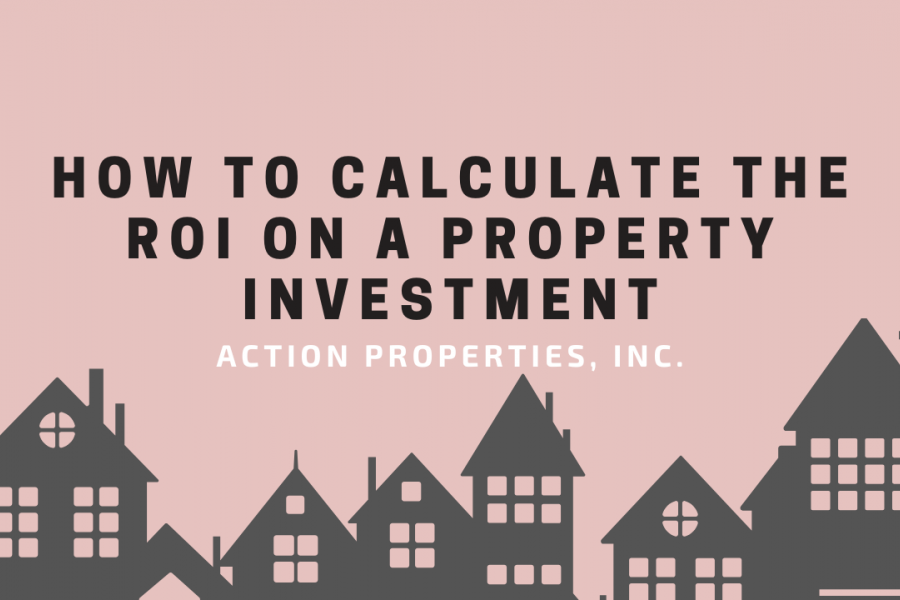
Owning rental properties is a reliable strategy for building wealth and earning passive income over time. However, before purchasing a property, it’s essential to understand how to measure its profitability. One of the key financial metrics used by real estate investors is Return on Investment (ROI). Calculating ROI helps property owners determine if an investment is worth their time, money, and effort.
Knowing how to calculate ROI accurately allows investors to compare different properties and make informed decisions. This article will break down the process of calculating ROI, explain the 1% rule, and discuss what is considered a good ROI for rental properties. Additionally, we will cover important considerations such as risk factors, financing options, and strategies to improve ROI over time.
Learn how we can help you maximize your home’s potential.
Long-Term vs. Short-Term Rentals
When evaluating a rental property, it’s important to understand the differences between long-term and short-term rentals, as each type has a different impact on ROI.
Long-Term Rentals
These are traditional rental properties leased for extended periods (usually six months to a year or more). Long-term rentals typically offer steady, predictable income and lower management costs. However, they may not generate as high of a return as short-term rentals in certain markets. The benefits include lower tenant turnover, consistent cash flow, and less hands-on management.
Short-Term Rentals
These are properties rented out for shorter durations. Short-term rentals have the potential for higher rental income due to premium pricing, especially in high-demand areas. However, they often require more active management, higher maintenance costs, and are subject to seasonal fluctuations. Regulatory restrictions may also impact the viability of short-term rentals in certain locations.

Investors should consider factors such as location, demand, and management involvement when deciding between long-term and short-term rentals. Additionally, understanding local rental laws and regulations can help avoid costly legal issues.
Calculating the ROI of a Rental Property
To determine if a rental property is a good investment, landlords must calculate its ROI. The formula for ROI is:
ROI = (Net Profit / Total Investment) × 100
A step-by-step guide to calculating ROI:
Determine Annual Rental Income
Estimate the total rental income the property will generate in a year.
Example: If you charge $1,500 per month, your annual rental income is $18,000.
Calculate Annual Expenses
Include costs such as property taxes, insurance, maintenance, property management fees, and mortgage payments (if applicable).
Example: If expenses total $6,000 per year, subtract this from the annual rental income.
Calculate Net Profit
Net profit is the remaining amount after subtracting expenses from rental income.
Example: $18,000 (income) - $6,000 (expenses) = $12,000 (net profit).
Determine Total Investment
This includes the purchase price, closing costs, renovation costs, and any other expenses incurred to make the property rent-ready.
Example: If you purchased a property for $200,000 and spent an additional $10,000 on renovations and closing costs, your total investment is $210,000.
Apply the ROI Formula
ROI = ($12,000 / $210,000) × 100 = 5.7%
This means the return on your investment is 5.7%. Additionally, landlords can factor in appreciation over time to estimate the long-term potential of their investment.

The 1% Rule Explained
The 1% rule is a simple guideline used by real estate investors to quickly evaluate the potential profitability of a rental property. It states that a property should generate at least 1% of its purchase price in monthly rent.
Example of the 1% Rule
A property purchased for $200,000 should ideally generate at least $2,000 per month in rent.
If the property rents for less than 1% of its purchase price (e.g., $1,200 per month), it may not provide a strong return unless other financial factors improve profitability.
While the 1% rule is a helpful initial screening tool, investors should still conduct a full ROI calculation and consider other factors like location, property condition, and demand. It’s also essential to evaluate financing terms, as higher mortgage rates could impact profitability.
What Is Considered a Good ROI Percentage?
The definition of a "good" ROI varies depending on factors such as market conditions, financing, and property type. However, general benchmarks can provide guidance:
- 8-12% ROI: This is typically considered a strong return for rental properties, especially in stable markets.
- 5-7% ROI: This may be acceptable for properties with long-term appreciation potential or in lower-risk investments.
- Below 5% ROI: This is generally considered a lower return, and investors should assess whether other benefits (such as property value appreciation) justify the investment.
Investors should also consider cash-on-cash return (ROI based on the actual cash invested) and cap rates (property’s net operating income divided by its purchase price) to get a comprehensive understanding of profitability. It’s important to account for market fluctuations and economic downturns when analyzing expected ROI.

Strategies to Improve ROI
Investors can take several steps to enhance their ROI and maximize profits, including:
- Optimizing rental rates. Conduct market research to set competitive yet profitable rental prices.
- Reducing vacancies. Implement effective marketing strategies and tenant screening processes to maintain full occupancy.
- Minimizing expenses. Negotiate lower property management fees, refinance loans at lower interest rates, and implement cost-saving maintenance strategies.
- Increasing property value. Consider property upgrades such as energy-efficient appliances, smart home technology, or minor renovations to increase rental appeal and justify higher rent prices.
Bottom Line
Calculating ROI is an essential step in evaluating a rental property’s profitability. By considering factors such as rental income, expenses, and total investment, landlords can determine if a property meets their financial goals.
For landlords looking to maximize their ROI, Action Properties, Inc. can help. Our team specializes in property management, market analysis, and tenant placement to ensure your rental property operates efficiently and profitably. Whether you own a single rental or a portfolio of properties, we provide expert guidance to enhance your returns.
Contact Action Properties, Inc. today to learn how we can help you optimize your rental investments and increase your ROI!